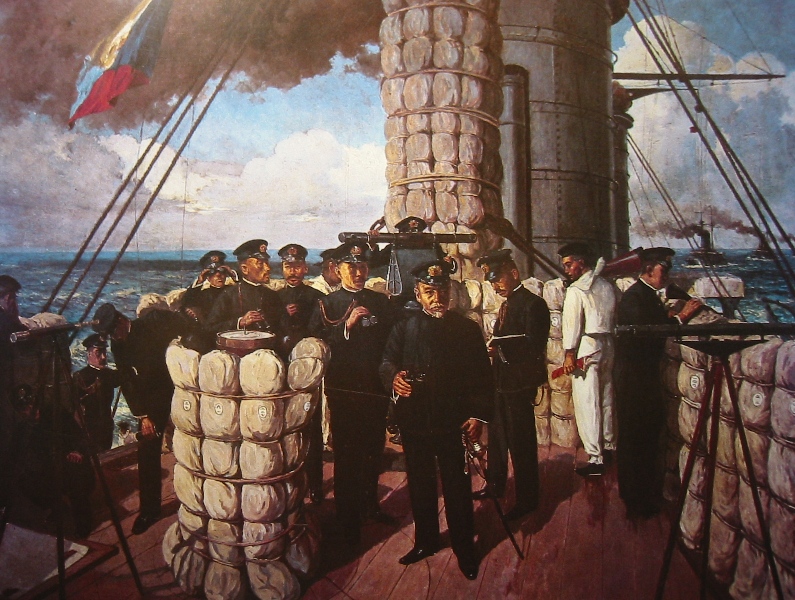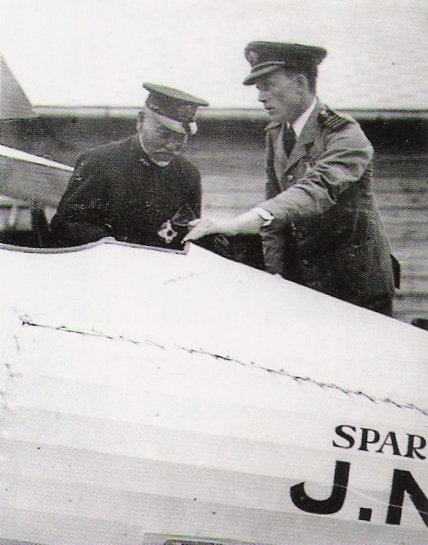<Back to Index>
- Physician Thomas Willis, 1621
- Writer Ilya Grigoryevich Ehrenburg, 1891
- Fleet Admiral Tōgō Heihachirō, 1848
PAGE SPONSOR
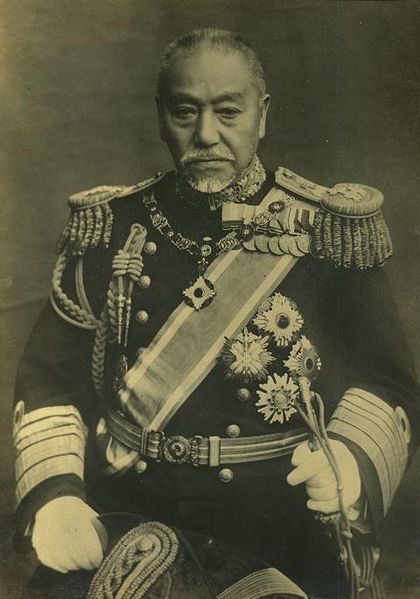
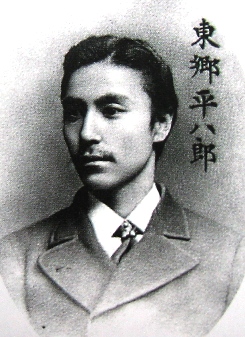
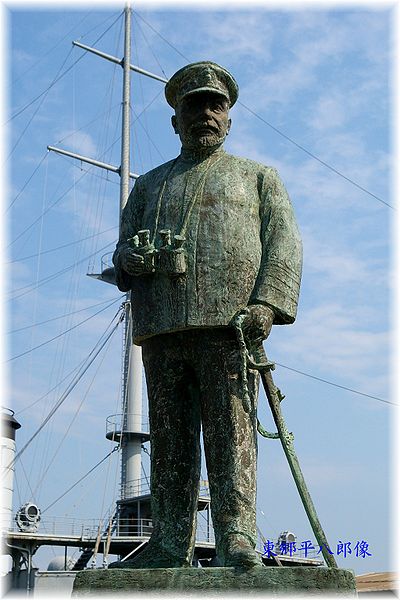
Fleet Admiral Marquis (Kōshaku (侯爵 kōshaku )) Tōgō Heihachirō, OM, GCVO (東郷 平八郎, 27 January 1848 - 30 May 1934) was a Fleet Admiral in the Imperial Japanese Navy and one of Japan's greatest naval heroes. He was termed by Western journalists as the 'Nelson of the East'.
Tōgō was born on 27 January 1848 (by the Western calendar) in the Kajiyacho district of the city of Kagoshima in Satsuma domain (modern-day Kagoshima prefecture), in feudal Japan. Tōgō's father was a samurai, serving under the Shimazu daimyo, and he had three brothers. Kajiyacho was one of Kagoshima's samurai housing districts, in which many other influential figures of the Meiji period were born, such as Saigō Takamori and Ōkubo Toshimichi. They rose to prominent positions under the Meiji Emperor partly because the Shimazu clan had been a decisive military and political factor in the Boshin war against the Tokugawa Shogunate during the Meiji Restoration. Tōgō's first combat experience was at the age of 15 during the Anglo - Satsuma War (August 1863), in which Kagoshima was bombarded by the British Royal Navy to punish the Satsuma daimyo for the death of Charles Lennox Richardson on the Tōkaidō highway the previous year (the Namamugi Incident), and the Japanese refusal to pay an indemnity in compensation. The following year, Satsuma established a navy, in which Tōgō and two of his brothers enrolled. In January 1868, during the Boshin war, Tōgō was assigned to a paddle-wheel steam warship, Kasuga, which participated to the Naval Battle of Awa, near Osaka, against the navy of the Tokugawa Bakufu, the first Japanese naval battle between two modern fleets. As the conflict spread to northern Japan, Tōgō participated as a third-class officer aboard the Kasuga in the last battles against the remnants of the Bakufu forces, the Naval Battle of Miyako and the Naval Battle of Hakodate (1869). Tōgō studied naval science for seven years in England as an apprentice officer, from 1871 to 1878, together with sixteen (or eleven?) other Japanese students. Tōgō visited London,
at that time the largest and most populous city in the world. Many
things were strange to Japanese eyes; the round houses made out of
stone, the 'number and massiveness of the buildings', 'the furnishings
of a commonplace European room', 'the displays in the butchers' shop
windows: it took them several days to become accustomed to such an
abundance of meat.' The Japanese group was separated and sent to
English boarding houses for individual instruction in English language, customs and manners. Next, Tōgō was sent to Plymouth, where he was assigned as a cadet on HMS Worcester, which was part of the Thames Nautical Training College, in 1872. Tōgō
found his cadet rations 'inadequate': "I swallowed my small rations in
a moment. I formed the habit of dipping my bread in my tea and eating a
great deal of it, to the surprise of my English comrades." This was
attributed possibly to Tōgō's 'Far Eastern metabolism', the lack of rice,
'or that some other essential element was missing; or perhaps the
climatic differences sharpened his appetite.' Perhaps the excitement of
his adventure contributed, or maybe Togo just liked the food. Tōgō's
comrades called him 'Johnny Chinaman', being unfamiliar with the 'Orient', and not knowing the difference between Asiatic peoples. 'The young samurai did
not like that, and on more than one occasion he put an end to it by
blows.' Tōgō also surprised these young Englishmen by graduating second
in the class. During 1875, Tōgō circumnavigated the world as an ordinary seaman on the British training ship Hampshire, leaving in February and staying seventy days at sea without a port call until reaching Melbourne,
eating only salted meat and ship's biscuits. Tōgō 'observed the strange
animals on the Southern continent.' On his return, Tōgō had sailed
thirty thousand miles. Tōgō suffered a strange illness which severely
threatened his eyesight: 'the patient asked his medical advisers to
"try everything", and some of their experiments were extremely
painful.' Mr. Capel commented later, 'If', he wrote, 'I had not seen
with my own eyes what a Japanese can suffer without complaint, I should
often have been disinclined to believe.... But, having observed Tōgō, I
believe all of them.' The Harley Street ophthalmologists saved his
eyesight. Tōgō studied mathematics in Cambridge (though not at the University) during this time, while living with Reverend A.S. Capel. Tōgō then went to the Royal Naval Academy in Portsmouth, and to the Royal Naval College, Greenwich.
During his stay, the Imperial Japanese Navy placed orders in Great
Britain for three warships. Tōgō made use of the opportunity to apply
his training, supervising (watching carefully) the construction of the Fusō whilst on work experience at the Samuda Brothers shipyard on the Isle of Dogs. Tōgō, newly promoted to lieutenant finally returned to Japan on 22 May 1878 onboard one of the newly purchased British built ships, the Hiei. Tōgō was absent from Japan during the Satsuma Rebellion, and often expressed regret for the fate of his benefactor Saigō Takamori. Back in the Imperial Japanese Navy, Tōgō received several commands, first as captain of Daini Teibo, and then Amagi. During the Franco - Chinese War (1884 – 1885), Tōgō, onboard Amagi, closely followed the actions of the French fleet under Admiral Courbet. Tōgō also observed the ground combat of the French forces against the Chinese in Formosa (Taiwan), under the guidance of Joseph Joffre, future Commander-in-Chief of French forces during World War I. In 1894, at the beginning of the First Sino - Japanese War, Tōgō, as a captain of the cruiser Naniwa, sank the British transport ship, Kowshing, which was chartered by the Chinese Beiyang Fleet to convey troops. A report of the incident was sent by Suematsu Kencho to Mutsu Munemitsu. The
sinking almost caused a diplomatic conflict between Japan and Great
Britain, but it was finally recognized by British jurists as in total
conformity with International Law, making Tōgō famous overnight for his
mastery of contentious issues involving foreign countries and
regulations. The British ship had been ferrying hundreds of Chinese
soldiers towards Korea, and these soldiers had mutinied and taken over the ship upon the appearance and threats from the Japanese ships. He later took part in the Battle of the Yalu, with the Naniwa as the last ship in the line of battle under the overall command of Admiral Tsuboi Kōzō. Togo was promoted to rear admiral at the end of the war, in 1895. After the end of the Sino - Japanese War, Tōgō was successively commandant of the Naval War College (Japan), commander of the Sasebo Naval College, and Commander of the Standing Fleet. In 1903, the Navy Minister Yamamoto Gonnohyōe appointed Tōgō Commander-in-Chief of the Combined Fleet of the Imperial Japanese Navy. This astonished many people, including Emperor Meiji, who asked Yamamoto why Tōgō was appointed. Yamamoto replied to the emperor, "Because Tōgō is a man of good fortune". During the Russo - Japanese War, Tōgō had engaged the Russian navy at Port Arthur and the Yellow Sea in 1904, and destroyed the Russian Baltic Fleet at the Battle of Tsushima in 1905, a battle which shocked the world with not little strategic upset. Tsushima had broken the Russian strength in East Asia, and is said to have triggered various uprisings in the Russian Navy (1905 uprisings in Vladivostok and the Battleship Potemkin uprising), contributing to the Russian Revolution of 1905. Post
war investigations were held for the Russian naval leadership during
those battles, in which Tōgō had either destroyed or captured, into the
reasons behind their utter defeat. The Russian commander of the
destroyed Baltic fleet, Admiral Zinovi Rozhdestvenski (who was badly wounded in the battle) attempted to take full
responsibilities for the disaster, and the grateful authorities (and
rulers of Russia) acquitted him at his trial. However, they made Admiral Nikolai Nebogatov,
who had tried to affix blame to the Russian Government, a scapegoat.
Nebogatov was found guilty, sentenced to ten years imprisonment in a
fortress, but was released by the Tsar after only serving 2 years. In 1906, Tōgō was made a Member of the British Order of Merit by King Edward VII. Later, Tōgō was Chief of the Naval General Staff and was given the title of hakushaku (Count) under the kazoku peerage system. He also served as a member of the Supreme War Council. In 1913, Tōgō received the honorific title of Fleet Admiral. From 1914 to 1924, Tōgō was put in charge of the education of Crown Prince Hirohito, the future Shōwa Emperor. Tōgō
publicly expressed a dislike and disinterest for involvement in
politics; however, he did make strong statements against the London Naval Treaty. Tōgō was awarded the Collar of the Supreme Order of the Chrysanthemum in 1926, an honor that was held only by Emperor Hirohito and Prince Kan'in Kotohito at the time. He added the award to his existing Order of the Golden Kite (1st class) and already existing Order of the Chrysanthemum. His title was raised to that of koshaku marquis in 1934 a day before his death. On his death in 1934 at the age of 86, he was accorded a state funeral. The navies of Great Britain, United States, Netherlands, France, Italy and China all sent ships to a naval parade in his honor in Tokyo Bay. In 1940, Tōgō Jinja was built in Harajuku, Tokyo, as the naval rival to the Nogi Shrine erected in the honor of Imperial Japanese Army General Nogi Maresuke. The idea of elevating him to a Shinto kami had been discussed before his death, and he had been vehemently opposed to the idea. There is another Tōgō shrine at Tsuyazaki, Fukuoka. The statues to him in Japan include one at Ontaku Shrine, in Agano, Saitama, and one in front of the memorial battleship Mikasa in Yokosuka. Tōgō's son and grandson also served in the Imperial Japanese Navy. His grandson died in combat during the Pacific War on the heavy cruiser Maya at the Battle of Leyte. In 1958, Admiral Chester Nimitz, an admirer of Admiral Tōgō, helped to finance the restoration of the Mikasa,
Admiral Tōgō's flagship during the Russo - Japanese war. In exchange,
Japanese craftsmen assembled a Japanese "Garden of Peace," a replica of
Admiral Tōgō's garden, at the National Museum of the Pacific War
(formerly known as The Nimitz Museum) in Fredericksburg, Texas.
